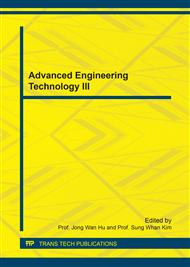p.143
p.149
p.155
p.161
p.169
p.175
p.181
p.188
p.192
Prediction and Optimization for Wall-Flow Structure Porous Ceramic Filter on Ballast Water Treatment
Abstract:
In light of urgent requirement of onboard ballast water treatment, a novel wall-flow structure porous ceramic filter (PCF) has been applied with combination of UV light in our laboratory works. According to the strict criteria of International Maritime Organization (IMO) on ballast water treatment, removal efficiencies on indicator planktons should be almost 100% even at high initial densities. However, the treatment efficiencies of PCF may be greatly affected by operational conditions of the system. Hence response surface methodology (RSM) was used to evaluate the significance of the operational factors on algal removal efficiencies. Based on our previous works, flow rate, algal density and algal size were considered as three key conditional factors during PCF treatment. These three individual factors and interactive effects between each two facts were studied statistically by Minitab 15. Also, experimental studies were arranged according to full factorial design of a 6L PCF on simulated ballast water treatment at different flow rates, algal densities and algal sizes. By computational prediction and mathematical analysis, the operational conditions were optimized with first order derivation of predicted model. And by doing so, the utmost optimization was estimated to achieve higher performance of PCF system.
Info:
Periodical:
Pages:
169-174
Citation:
Online since:
June 2017
Authors:
Keywords:
Price:
Сopyright:
© 2017 Trans Tech Publications Ltd. All Rights Reserved
Share:
Citation:


